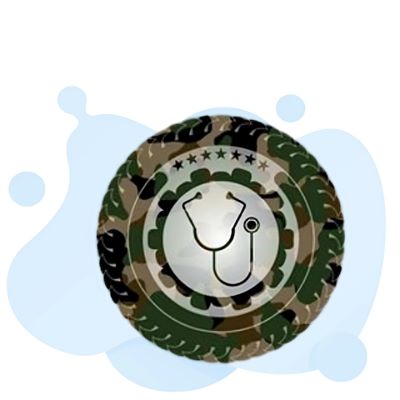
The MACE (Military Acute Concussion Evaluation) helps check brain injuries in military folks. It pinpoints a concussion and checks how the person’s brain works. This tool is a clear way to see if a head bump or blast affects someone’s brain.
It is a short test that medics and corpsmen can easily do. They check for possible brain injuries right on the spot. This makes the MACE very handy and quick to use in the military field.
The MACE, or Military Acute Concussion Evaluation, is a key tool for healthcare workers. They use it to check and diagnose concussions, mainly in military spaces. It’s especially for those who might have lost consciousness or memory after a big hit or accident.
Its main job is to check if someone has a concussion. Then it gives info to help decide what’s best for their health and if they can go back to work. The MACE lets doctors and nurses make smart choices for the person’s care and healing.
In 2007, the Defense and Veterans Brain Injury Center, with help from 32 experts, made the MACE. This tool became necessary due to many head injuries in Iraq and Afghanistan wars. It was made to be simple and quick for military medics to use.
They based the MACE on the SAC, a popular sports medicine test for finding brain injury effects. The MACE aims to be a short yet powerful test. It helps medics see if someone has any thinking or physical problems after a head injury.
MACE (Military Acute Concussion Evaluation) TestConcussion AssessmentMilitary Medicine: Battlefield Triage
The MACE (Military Acute Concussion Evaluation) test checks for head injuries soon after they happen. Usually, it’s done within the few minutes to hours right after a head injury. This military medical protocol for checking traumatic brain injuries has two parts: a talking part and a test part.
The talking part gets details about the injury. It looks at what happened, if there were memory issues or changes in how conscious the person was, and any other noticeable problems. The test part measures how well the person’s brain is working. It checks their awareness, memory right after the injury, focus, and memory later on. It also does a quick check of their brain and nerves.
It only takes 5-10 minutes to finish the MACE test. It doesn’t need a doctor or a psychologist to be there, so it’s great for medics and others in the field. This quick test helps in military medicine and when sorting out who needs urgent care after a head injury.
The MACE test is important for helping injured soldiers quickly. It gives healthcare workers a clear way to do a medical brain check on the spot. This lets them figure out what to do next and how to help right away if someone has a brain injury.
Understanding MACE (Military Acute Concussion Evaluation) test results needs a careful look. A score under 25 out of 30 might mean someone has thinking troubles. But, each part of the test shows different things.
Not remembering one word might not show big thinking problems. But not knowing the month or year might point to something more serious. Remember, the MACE is part of a bigger check. It’s not the only proof for or against brain issues.
Healthcare providers check more than the MACE for clues. They also look at what you say about how you feel and what they see. Plus, when the brain injury happened matters, too. All this info helps in giving the right care.
Keep in mind, the MACE looks for brain issues in a standard way. But, missing a perfect score on its own doesn’t always mean you have a concussion. People without concussions might do worse, in some cases.
The MACE test comes from the SAC test. Studies show they match up well with more detailed tests done soon after an injury. So, the MACE score is just one piece of a puzzle made of your health history and how you feel now.
| MACE Test Section | Total Possible Score |
|---|---|
| Immediate Memory | 15 points |
| Concentration | 5 points |
| Orientation | 5 points |
| Delayed Recall | 5 points |
By learning about the MACE, doctors can better figure out brain injuries in the military. It’s about using many check-ups together to get the full picture.
The MACE (Military Acute Concussion Evaluation) is key for checking and handling slight traumatic brain injuries in military setups. It offers a uniform way to spot changes in brain function after a head injury. This guides medics to quickly decide on treatment and when it’ll be safe to go back to duties. With its detailed history and tests, the MACE helps tackle the ongoing problem of concussions and other mild traumatic brain injuries.
Dealing with the effects of blast injuries is a military priority. The MACE plays a critical role in this effort. Its standardized test is very useful. It fits well in military healthcare and the treatment of injuries in combat. It is a vital tool for mTBI assessment and care on the ground.